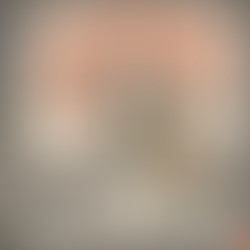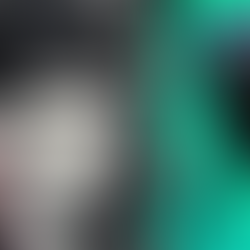The My Lai Massacre: One Of America's Darkest Days
- dthholland

- Mar 16, 2023
- 6 min read
Updated: Jun 30, 2024

The My Lai massacre will always be a disturbing memory in the American conscience and will often resurface in any discussion or evaluation of this pointless conflict.
Amidst the brutal and grim Vietnam War, in the early hours of March 16, 1968, three platoons of US soldiers from “Charlie Company” were deployed by helicopters to the Son My region. They were tasked with a search-and-destroy operation, instructed to eliminate National Liberation Front (North Vietnamese) fighters – referred to as Viet Cong or VC by American troops – who were believed to be active in the area.
According to US Army commanders, anyone discovered in the area was deemed to be Viet Cong or active sympathisers, leading to the troops being instructed to demolish their village.
Lieutenant William Calley led 1 Platoon, which was dispatched to My Lai, a village with approximately 700 inhabitants. Calley was informed that he might encounter NLF members in the vicinity.

Initially, the soldiers were merely keeping the villagers captive. They gathered the people in the heart of the small village known as My Lai, holding them at gunpoint and demanding that they reveal the hidden Viet Cong forces that the Americans suspected they were sheltering.
The massacre commenced when an unidentified soldier abruptly stabbed a Vietnamese man with his bayonet. After fatally injuring one individual, he forcibly removed another from his location, threw the civilian into a well, and then threw a grenade in after him.
This action did not explicitly violate any orders. Prior to entering the town, a soldier had inquired about whether they were supposed to harm the women and children."They're all VC," his commanding officer, Captain Ernest Medina, had replied. They were to kill, he told them, anything "walking, crawling or growing."
The Murdered Children
Subsequently, the rest of the soldiers imitated the actions of the initial man. In a matter of seconds, they began shooting a gathering of 15 to 20 women who were praying with their children. They proceeded to traverse the village, forcing the residents into ditches and shooting them in the head as they lay on the ground in blood and dirt.
"A lot of women had thrown themselves on top of the children to protect them,"
a witness, Private Dennis Knoti, said afterward, testifying against William Calley, the only soldier who was ever convicted for the My Lai Massacre. "Then, the children who were old enough to walk got up and Calley began to shoot the children."
1st Platoon in Xom Lang gathered a large group of around 70–80 villagers and escorted them to an irrigation ditch east of the settlement. Despite pleas from women declaring they were not Viet Cong and attempting to protect their children, the soldiers, including Calley, ordered the villagers into the ditch and shot them dead. Private First Class Paul Meadlo testified that he used multiple M16 rifle magazines during the incident. He recalled shooting at elderly men and women, as well as teenagers and mothers with babies, believing they were all potentially armed with grenades and a threat. Meadlo also admitted to firing at civilians alongside Lieutenant Calley during another security sweep in My Lai.
When PFC Michael Bernhardt entered the subhamlet of Xom Lang, the massacre was underway:
I walked up and saw these guys doing strange things ... Setting fire to the hootches and huts and waiting for people to come out and then shooting them ... going into the hootches and shooting them up ... gathering people in groups and shooting them ... As I walked in you could see piles of people all through the village ... all over. They were gathered up into large groups. I saw them shoot an M79 grenade launcher into a group of people who were still alive. But it was mostly done with a machine gun. They were shooting women and children just like anybody else. We met no resistance and I only saw three captured weapons. We had no casualties. It was just like any other Vietnamese village – old papa-sans, women and kids. As a matter of fact, I don't remember seeing one military-age male in the entire place, dead or alive.
Calley was not the sole individual responsible for killing children. Multiple witnesses disclosed the identities of other soldiers who, as per their accounts, had slaughtered women and infants. Ultimately, a large number of innocent civilians lost their lives — 347 as per the U.S. Army, and 504 as per the Vietnamese government.
Conversely, only a single American soldier sustained injuries: Private Herbert Carter, who, amidst the chaos, inadvertently shot himself in the foot.
Not a single Viet Cong combatant was found in the village. "As a matter of fact," Private First Class Michael Bernhardt, one of the men who revealed the massacre to the world, would later testify, "I don't remember seeing one military-age male in the entire place, dead or alive."
According to the Peers Commission Investigation, the U.S. government allocated commission for inquiry into the incident, concluded at least 20 Vietnamese women and girls were raped during the Mỹ Lai massacre. Since there had been little research over the case other than that of the Peers Commission, which solely accounts the cases with explicit rape signs like torn cloth and nudity, the actual number of rapes are not easy to estimate. According to the reports, the rape victims ranged between the ages of 10 and 45, with nine being under 18. The sexual assaults included gang rapes and sexual torture.
No U.S. serviceman was charged with rape. According to an eyewitness, as reported by Seymour Hersh in his book on the massacre, a woman was raped after her children were killed by the U.S. soldiers. Another Vietnamese villager also noticed soldiers rape a 13-year-old girl.
The End Of The My Lai Massacre
In the end, the killings were stopped by Hugh Thompson Jr., a U.S. Army helicopter pilot. He witnessed the violence from above, tried to save the injured, and then bravely landed his helicopter in the midst of danger, challenging his fellow soldiers to shoot him if they wanted to continue the massacre.
Once the killings were over, he informed his superior about what had happened. In return, his superior gave him a medal and a citation that twisted the truth of the massacre, offering a reserved and polite commendation. It was expected that Thompson would accept the falsified citation, but instead, he chose to reject it.
It wasn't until a year later that the truth was revealed. Initially, news outlets claimed that 128 Viet Cong had been located and eliminated in My Lai. However, after infantryman Tom Glen informed his superiors and aviator Ronald Ridenhour reached out to around 30 members of Congress urging them to expose the real events, the story started to gain national attention by the autumn of 1969.
The Trial of William Calley
Despite the revelation of the truth, hardly anyone faced consequences, with platoon leader William Calley bearing the full responsibility for the My Lai Massacre. Calley, the only one held accountable for the deaths of hundreds of innocent civilians, received a lenient sentence of house arrest after President Richard Nixon intervened to change his prison sentence. Following just three years of house arrest, a federal judge granted his release. The remaining soldiers accused in the massacre were either acquitted or had their charges dismissed, leaving justice elusive in the aftermath of the My Lai Massacre.
US soldier Varnado Simpson testified in December 1969:
“Everyone who went into the village had in mind to kill. We had lost a lot of buddies and it was a VC stronghold. We considered them either VC or helping the VC.”
However, not a single Viet Cong combatant was found there. "As a matter of fact," Private Michael Bernhardt would testify, "I don't remember seeing one military-age male in the entire place, dead or alive.”
It was not until November 1969 that the outside world learned about any of this, when a US soldier named Paul Meadlo confessed on television to killing "ten or fifteen men, women, and children" at My Lai. The true extent of the tragedy started to come to light, revealing that many hundreds of villagers had been slaughtered.

Several US soldiers faced charges for the killings, but only Lieutenant William Calley was convicted as the rest were either acquitted or had the charges dropped.
Calley, who had spoken earlier of “my troops getting massacred and mauled by an enemy I couldn’t see, an enemy I couldn’t feel, I couldn’t touch. . .” put forward the defence that he was in My Lai to hunt out communists and to destroy communism and that he was “only carrying out my orders, which were to hunt out the NLF.”
It was true that “Charlie Company,” to which Calley belonged, had earlier lost five men killed by booby traps and others had been wounded by these unseen weapons.
But Calley was found guilty of killing 109 civilians and sentenced to life imprisonment. However, after an intervention by President Richard Nixon this prison sentence was changed to house arrest. Three years later, Calley was granted his release by a federal judge.
The number of casualties at My Lai is still a matter of debate. A memorial at the location honors 504 people, ranging in age from one to eighty-two years. Nevertheless, a U.S. Army investigation concluded that the official count of casualties was 347.
On 16 March 2008, over a thousand individuals gathered, marking forty years since the massacre took place. The event brought together survivors, families of victims, and returning U.S. veterans. A woman, who was 8 years old during the incident, shared her experience,
"Everyone in my family was killed in the Mỹ Lai massacre—my mother, my father, my brother and three sisters. They threw me into a ditch full of dead bodies. I was covered with blood and brains."




































































































